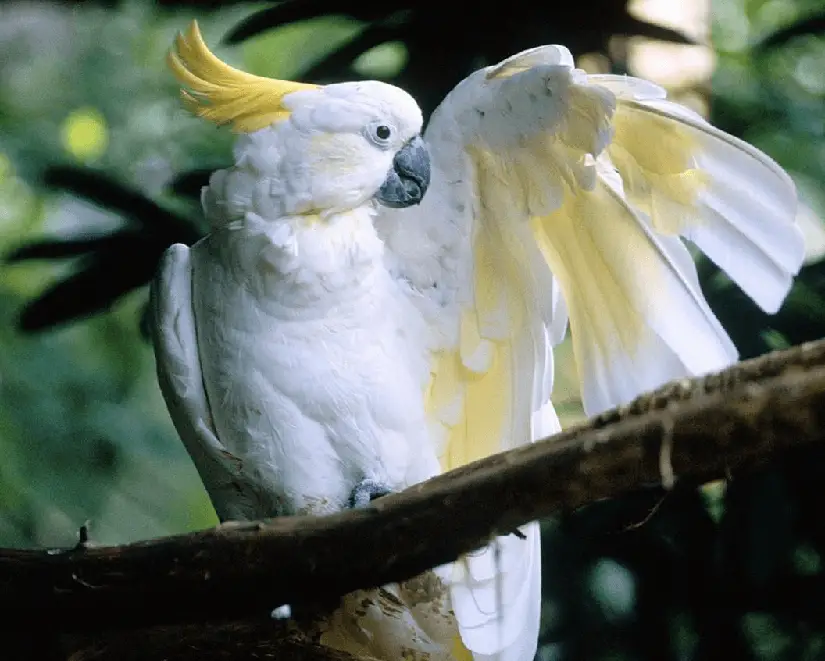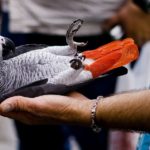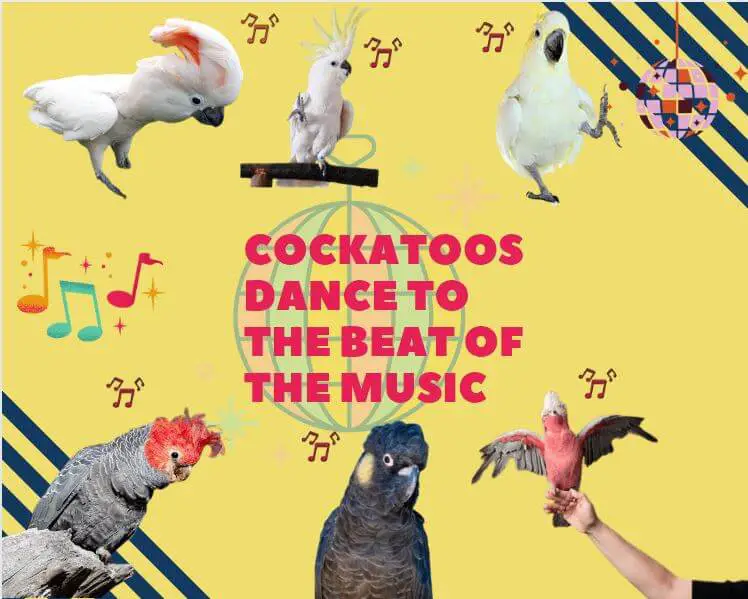Cockatoo dancing feats were hugely successful. The bird fidgets and kicks its feet to the tune of Everybody, a song by the Backstreet Boys.
The effect is striking, giving the impression that the parrot is actually following the rhythm of the song. Cockatoos are known for their complex behavior and antics when first made pets.
But from there to dance… A neurobiologist at the Neurosciences Institute of San Diego (California), Aniruddh Patel discovered with amazement the prowess of this crested cockatoo ( Cacatua galerita Eleonora ).
Why do cockatoos dance
In recent work, this researcher had put forward the hypothesis that this gift that cockatoo have for dancing to music is linked to their ability to imitate sounds and, more precisely, that there must be a particular link between the auditory systems and motor.
If this hypothesis is correct, it could be interesting to take a closer look at parrots and other cockatoos which, precisely, are particularly good at imitations.
We wanted to know more about Cockatoo and contacted its owners, who live in the United States, in Illinois. The neurobiologist subjected the bird to a more difficult exercise.
His favorite song was played to him with varying tempos. If the cockatoo is just moving mechanically when it hears music, the change in rhythm will have no effect on its gestures. But this is not the case. Cockatoo speeds up or slows down accordingly. He, therefore, coordinates his movements with the music.
the cockatoo dances to the music and tunes his movements to the tempo, measured here in BPM, which could be translated as beats per minute.
The researcher observed the bird’s behavior extensively and describes his analysis in the journal current biology. This work inspired another, released simultaneously in the same publication.
Adena Schachner, a behavioral scientist at Harvard University, first became interested in Alex, an African Gray Parrot who is very good at sound mimicry. She and her colleagues demonstrated that, like Snowball, Alex was very good at dancing to the beat.
The team then reviewed a thousand videos posted on YouTube showing animals dancing. There are indeed all kinds of dogs, cats, chimpanzees …
But their gestures do not stand up to close analysis. Adena Schachner and her colleagues have retained only a few cases where the animal seems to actually adapt its movements to the rhythm of the music.
All of these non-human dancers were imitation specialists, essentially parrots. All but one because the team also selected an Asian elephant… However, we know of one of these pachyderms, described in 2005, which was able to imitate the sound of a truck.
” It seems that vocal imitation and the sense of rhythm have the same neurological bases, ” concludes Adena Schachner in the online magazine Science.
But how to explain this rhythm in the feathers that only the Sulfur-crested cockatoos native to Australia share with humans?

cockatoo dancing
Cockatoo dancing snowball

cockatoo dancing to the queen
Cockatoo dancing video
SOURCE:Sky News
Sometimes better than a man on his legs, parrots always respond in rhythm, either with their legs or with their heads, to the sound of music. Snowball, a cockatoo of a species from Australia, had been known for its synchronous way of moving for the past decade or so.
Thanks to new research published in the journal Current Biology, we now know that he has an impressive diversity of figures that he performs spontaneously.
The study consisted of filming the cockatoo when playing two pop songs: one by Cindy Lauper, another by Queen.
A neurobiologist, also an accomplished dancer, was then responsible for analyzing the performance of the animal, image by image. The experiment was performed three times for each of the songs. Conclusion?
The bird improvises and does not repeat at any time the dance movements already performed on the same musical passages heard previously.
Does a Dancing Cockatoo Really Feel the Rhythm?
Cockatoo dancing to “Happy” by Pharrell Williams
SOURCE:berniemac3377
Parrots already share a lot with our species: they are capable of both vocal and gestural imitations.
They are also able to forge very strong long-term social bonds and learn complex sequences of action. As for the “dance”, it is rather used to court females with certain head or body movements. But when there is no female, without the need to seduce, researchers wonder why the cockatoo dances?
Snowball has not finished moving his feathers: the next step will be to assess his talents when a human dance with him and whether this interaction influences his movements as well as the duration of them.
Known since 2009 thanks to its videos on the Internet, Snowball has been the subject of several types of research. After several analyzes, neuroscientists from Harvard had asserted that the fact of following the music in rhythm by matching its movements was undoubtedly related to the language.
Cockatoo Loves Elvis
SOURCE:Mark Muldoon
Dance would be a by-product of language. So all animals that have a sense of rhythm could have language skills. However, not everyone with these abilities would be able to dance to the beat.
These are the basal ganglia that link hearing and motor skills. They allow movement to continue while new action consciously begins. When a parrot learns to speak, we can observe changes in these gray nuclei. The same as in humans when listening to music.
We haven’t finished hearing about it… and dancing!
Frostie Dancing To Shake Your Tail Feather
SOURCE:Karla Larsson
Cockatoo Type





















